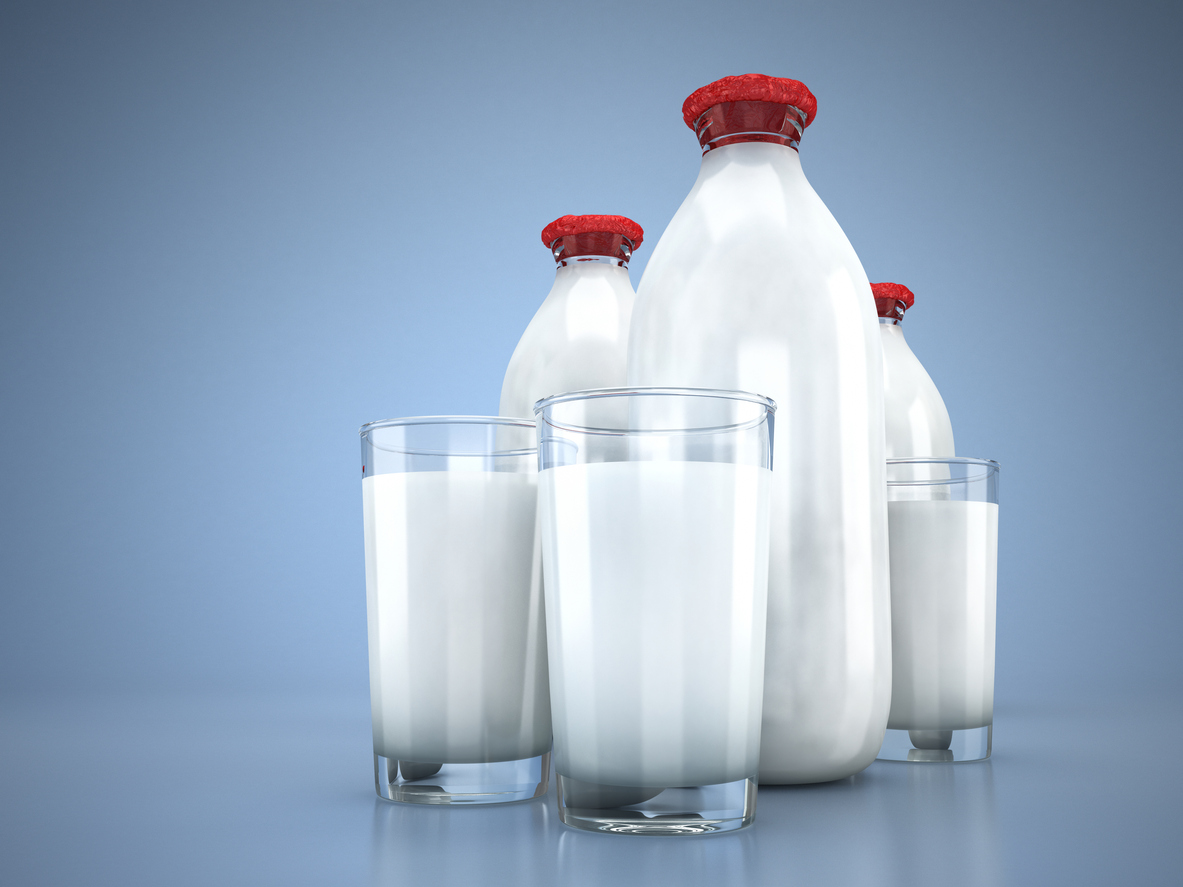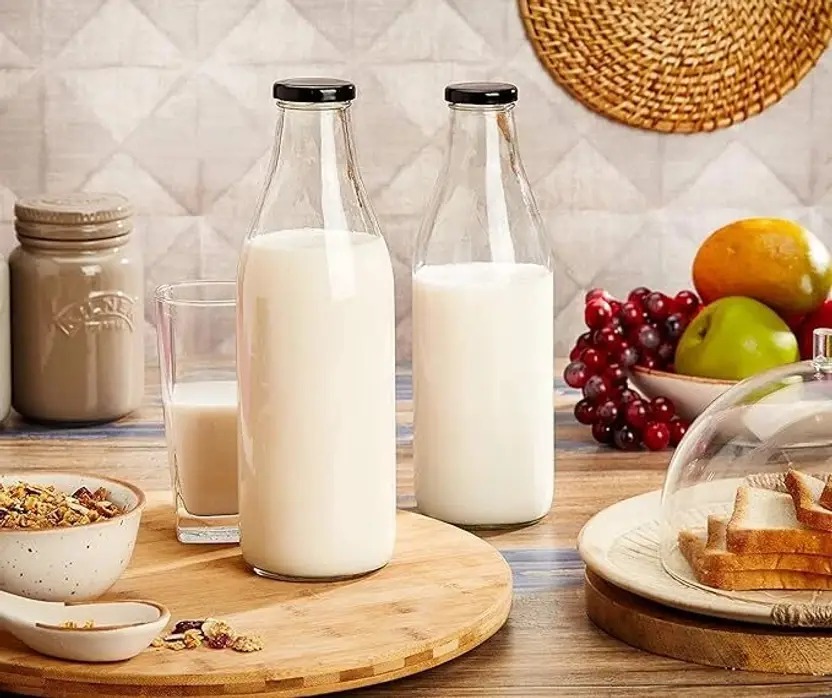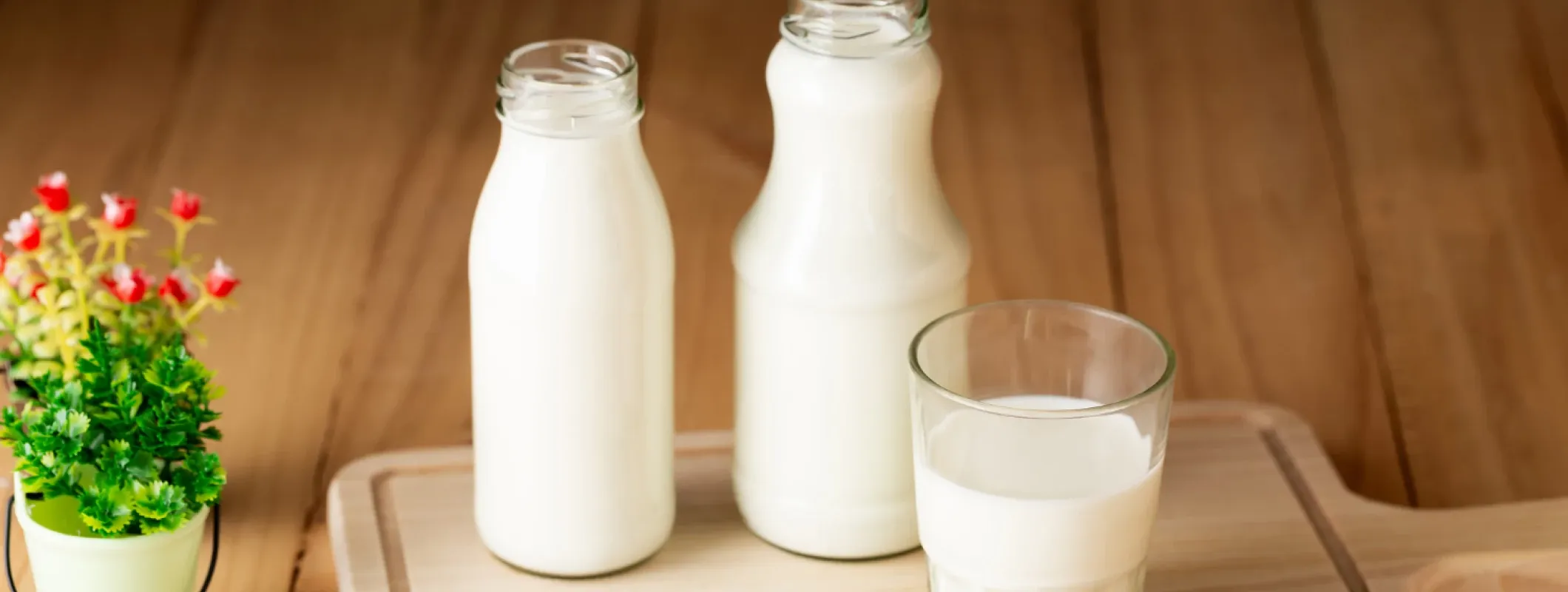In an era of growing environmental consciousness, the return of the classic glass milk bottle is a welcome sight on doorsteps and in stores. But a common question arises for those making the sustainable switch: just how many times can these sturdy bottles be reused? While the simple answer is ‘dozens of times,’ the true number is a fascinating interplay of science, logistics. From the rigorous sterilization processes at the dairy to how we handle them at home, several factors determine whether a bottle gets a second life or a fiftieth. Let’s delve into the journey of a glass milk bottle to understand what gives it such impressive longevity and how you can maximize its reuse.

Table of Contents
Quality of Glass
The number of times a glass milk bottle can be reused depends heavily on the quality of the glass itself. Well-made bottles can typically be reused around 20 to 30 times when handled with reasonable care—especially during cleaning, refilling, and transportation.
Material Stability and Physical Strength
High-quality glass offers excellent durability and can withstand temperature variations without cracking, making it safe to move from the refrigerator to room temperature repeatedly. Thicker glass also provides better resistance to impacts and mechanical stress, which helps the bottles survive numerous washing cycles and handling in transit.
Chemical Resistance and Freshness
One of the great advantages of glass is its non-reactive nature. It doesn’t absorb odors, flavors, or chemicals from milk or cleaning agents, which helps maintain the freshness and taste of the milk over many uses. Its smooth, non-porous surface also resists bacterial buildup, supporting both safety and flavor.
Industry Data and Best Practices
Some commercial dairies report achieving over 30 uses per bottle thanks to strict washing, inspection, and bottling protocols. In the UK, for example, the average bottle is reused about 18 times, though ongoing efforts to improve bottle design and handling processes aim to increase that number. Leading dairy producers use automated scanning systems to detect and remove damaged bottles, and they often calibrate filling machinery to minimize wear. Sustainable dairy companies such as Morning Fresh Dairy and Straus Creamery also encourage bottle longevity through well-organized return-for-reuse programs.
Key Point
Ultimately, two elements play the biggest role in extending a glass milk bottle’s life: the initial quality and thickness of the glass, and consistent adherence to careful cleaning and handling practices—both at home and across the industry.
How to Clean and Care for Reusable Glass Milk Bottles
To make glass milk bottles last as long as possible, proper cleaning and care are essential. Good maintenance not only keeps the bottles safe for repeated use but also helps reduce waste. Some dairies even manage to reuse bottles up to 50 times thanks to consistent and thorough cleaning routines.
Essential Cleaning Steps
After the milk is finished, it’s a good idea to give the bottle a quick rinse with warm water. This helps prevent milk from drying on the inside and makes washing easier later. If the bottle has a lid or removable seals, take those apart so every part can be cleaned properly.
Using a bottle brush and mild soap works well for scrubbing both the inside and outside. Pay special attention to areas like the rim, the threads, and the bottom where residue tends to build up. For stuck-on bits, a spoonful of baking soda with some water left to soak can help loosen things up—just shake gently and rinse.
Sterilizing the bottles every so often is also important. This can be done by boiling them in water for about five minutes or, if the manufacturer says it’s safe, running them through the dishwasher. Be aware that very hot dishwasher cycles may cause more wear over time. Once cleaned, give everything a final rinse to remove any soap, and then let the bottle and parts air dry completely before reassembling. Storing the bottle with moisture still inside can encourage bacteria or damage the glass.
Maintenance and Storage
For everyday use, glass milk bottles should be washed after each use. If used regularly, sterilizing a few times a week is recommended—especially in households with high milk consumption or in shared settings.
Always make sure bottles are fully dry before putting them away. Store them in a cool, clean place out of direct sunlight. Keeping the bottles dry with the lid off prevents odors and maintains hygiene.
Following these simple but effective steps can help keep glass milk bottles in great condition through many uses. Not only does this save money in the long run, but it also supports a more sustainable lifestyle.

Handling Practices for Glass Milk Bottles
Proper handling is essential for extending the life of glass milk bottles, maintaining their cleanliness, and ensuring they can be reused multiple times.
Cleaning and Sanitization
It’s helpful to rinse bottles with water soon after they’re empty. This prevents milk from drying inside and makes the full cleaning process easier later on. When bottles are returned, they go through industrial washers that use hot water and food-grade sanitizers to thoroughly remove any residue and bacteria. This cleaning step is repeated before every reuse to make sure each bottle meets hygiene standards.
Visual Inspection and Quality Control
After washing, each bottle is carefully checked—either by staff or automated systems—for chips, cracks, or other damage. Bottles that are no longer in good condition are recycled, while those that pass inspection are refilled and sent back into use.
Gentle Handling Throughout the CycleIt’s important to handle glass bottles gently at every stage: during return, transport, washing, and delivery. At home, placing bottles in stable storage areas and avoiding rough handling or stacking can help prevent accidental damage.
Reuse Limits and Bottle Lifespan
A well-made glass milk bottle can typically be reused around 25 to 30 times. Its actual lifespan depends heavily on how it’s handled and cleaned throughout its use cycle.
Temperature Resistance and Storage
Glass bottles tolerate temperature changes well, moving from refrigerator cold to hot wash temperatures without issue. Storing clean bottles in a dry, secure spot helps avoid contamination and physical damage.
Consumer and Supplier Cooperation
Some dairies encourage customers to give bottles a quick rinse or swirl before returning them. Small actions like this can help keep bottles cleaner before they undergo full sanitation. Deposit-return programs also play a big role—offering a small incentive for returns helps increase reuse rates and supports sustainability.
Environmental Benefits
Consistent returns and careful handling allow each bottle to be used many times. This reduces the need for new glass production and helps keep waste out of landfills.
Frequency of Use: How Many Times Can You Reuse a Glass Milk Bottle?
A typical glass milk bottle can be reused around 20 to 30 times before it’s ready for recycling. How long it lasts depends on a few important factors—like the quality of the glass, how it’s cleaned, and the way it’s handled throughout its life.
High-quality glass, especially borosilicate glass, tends to withstand repeated washing and everyday use better. It’s more resistant to impacts and sudden temperature changes, which helps the bottle stay in good shape over time.
Cleaning also plays a big role. Rinsing the bottle soon after it’s empty helps prevent residue buildup. When bottles are returned, commercial dairies use industrial-grade washers that sanitize them thoroughly, preparing them for safe reuse.
Being careful with the bottles matters too. Avoiding drops and rough handling, whether at home or during transport, helps prevent chips and cracks. Storing bottles in a stable, moderate environment—without extreme temperatures or crowded spaces—also extends their lifespan.
In well-run return systems, bottles are regularly collected, cleaned, and put back into circulation. The best results often come from partnerships between dairies and customers—where people may give bottles a quick rinse before returning them, and dairies use gentle processing equipment.
While most bottles are reused 20 to 30 times, some can last even longer with good care. Stronger glass and consistent handling help create a more sustainable cycle of use, reducing waste and supporting eco-friendly habits.

How to Store Your Glass Milk Bottles for Reuse
Proper storage plays an important role in extending the life of glass milk bottles. When stored correctly, these bottles can be reused up to 20 to 30 times. Good storage practices help prevent physical damage and maintain hygiene.
It’s best to keep bottles on a stable and flat surface where they won’t be easily knocked over or compressed. Physical impacts are a common cause of chips and cracks, so avoiding cluttered or high-traffic areas can make a big difference.
Temperature consistency also matters. Glass should be stored somewhere with moderate, stable temperatures, away from direct sunlight or extreme cold. Rapid temperature changes can weaken the glass over time, which is why bottles made from borosilicate glass—known for its thermal resistance—often last longer.
Before storing, bottles should be completely clean and dry. Any leftover moisture can encourage bacterial growth or leave residues, affecting both safety and reuse potential. Using airtight, tamper-evident caps when not in use can help keep the interior clean and preserve freshness.
It’s generally not recommended to stack the bottles unless they’re specifically designed for it. Too much vertical pressure can lead to cracks or breaks. With careful storage—clean, dry, and properly placed—glass milk bottles can safely serve through many reuse cycles.
Return Rate for Reusable Glass Milk Bottles
The return rate of glass milk bottles plays a crucial role in their reuse potential and overall environmental benefit. High return rates allow dairies to efficiently collect, clean, and refill bottles, extending each container’s lifespan and significantly reducing waste.
Real-world examples show what’s possible. Canada’s beer industry, for instance, achieved a 97% return rate for refillable bottles as early as 2005, maintaining a strong 95% national average by 2016. The Ontario Beer Store reported an impressive 97% return rate in 2019, handling over half a billion bottles—proof that well-run return systems are achievable. In the U.S., many local dairies using deposit programs also see return rates exceeding 90%, especially when incentives like a $2 deposit are in place. A 2015 study further supports a 95% return rate with eight reuses per bottle as an ideal benchmark for environmental performance.
The return rate directly affects both sustainability outcomes and costs. Analysis shows that at a 95% return rate and eight uses per bottle, social costs remain relatively low. When the return rate drops to 80%, costs rise, and at 100% return with 20 reuses, they fall significantly. Even a decline to 50% leads to a noticeable cost increase. This highlights how small improvements in return rates can deliver both economic and ecological benefits.
Several factors help maintain high return rates. Offering a meaningful deposit—research shows rates jump from around 69% to over 92% when deposits reach $0.15 or more—strongly motivates returns. Convenient drop-off locations and clear communication also play important roles. When people understand how and where to return bottles, and see the value in doing so, participation increases.
Ultimately, successful bottle return programs combine practical incentives, accessibility, and education. When customers consistently return bottles, each one can be reused many times, creating a system that’s both cost-effective and sustainable.
Inspection and Integrity Checks for Glass Milk Bottle Reuse
Inspecting glass milk bottles before each reuse is essential for safety and maximizing their lifespan. Consistent checks help prevent accidents and contamination while supporting sustainability efforts.
A thorough visual inspection should be done every time a bottle is prepared for cleaning or refilling. Key areas to examine include the rim for chips, the body for cracks, and the interior for cloudiness or stubborn stains. Any bottle showing these defects should be taken out of circulation to avoid potential risks.
Larger operations often rely on automated inspection systems integrated into their production lines. These systems use advanced imaging technology to scan the base, sides, opening, and sealing surfaces of each bottle. They efficiently identify issues such as micro-cracks, residues, or signs of wear that might be missed by the human eye. Some high-speed systems can process up to 30,000 bottles per hour with high accuracy.
For smaller-scale users like offices or homes, a simpler manual process works well. Used bottles can be collected in a clearly labeled tray, and users can be encouraged to rinse them before drop-off. Keeping a basic log of how many bottles are reused, replaced, or discarded helps track efficiency and supports sustainability reporting.
Regular and careful inspection ensures that only safe, intact bottles are reused. This not only extends the life of each bottle but also maintains the reliability of the reuse system as a whole.

Conclusion
In summary, glass milk bottles can typically be reused between 20 to 30 times—and sometimes even more—when they are produced with high-quality materials, handled with care, and maintained through proper cleaning and inspection. Factors such as glass strength, chemical resistance, consistent cleaning, and mindful consumer practices all play essential roles in extending a bottle’s lifespan. By adopting responsible reuse habits, consumers and dairy producers contribute to a more sustainable system that significantly reduces waste and environmental impact.
At TP Glass Bottle Manufacturer, we specialize in producing durable, reusable glass bottles designed to meet the highest standards of performance and sustainability. With a focus on premium materials and innovative design, our bottles are made to last through countless uses, supporting both your brand and the planet. Choose TP for packaging that combines tradition, reliability, and eco-conscious innovation.

